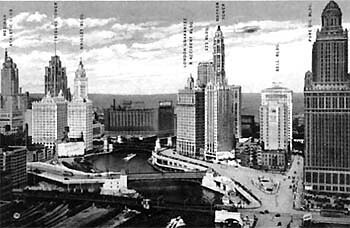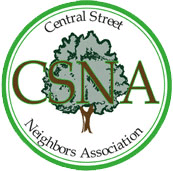Soufflé and Wedding Cake Arguments Are Half-Baked
Much discussion of Evanston's downtown has invoked a "wedding cake" concept, with the center tallest, and heights lower further out. Mega-growth advocates urge that an extra-tall building on the Fountain Square block will restore a cake-shaped "typical urban form" to downtown, which now allegedly resembles a "fallen soufflé." This is loaded language, meant to shame us as lousy cooks. I'd feel bad, except for one thing: it's nonsense.
First, since 1920, as one official Illinois publication notes,
the "typical urban form" has been the "automobile subdivision." Few towns of 75,000 sport skyscrapers. So if Evanston wanted simply to conform, we'd emulate sprawl, not stacking.
In urban design literature, "wedding cake" is a little-used term, usually referring not to a neighborhood, but to progressive stepbacks in individual buildings, to offset height. On the Internet, most references to a "wedding cake" as typeform for an entire downtown appear only in discussions of Evanston. Nowhere have I found a "wedding cake" prescribed as the consensus ideal for downtowns.
No rule says tallest must be central or vice versa. The World Trade Center was located at the tip of Manhattan, whose center is defined by a square (Times) and a park (Central). Boston, which long preserved space and light between skyscrapers, has its tallest building in Back Bay. In San Francisco, the Transamerica pyramid is in the city's northeast corner.
 For decades, downtown Chicago hasn't had one central colossus, but three towers on the perimeter: the Sears Tower on Wacker, the Hancock atop the Mag Mile, and the Aon (formerly Standard Oil) east of Michigan. The Trump Tower, too, will be outside the Loop. This echoes the Windy City's 1920s skyscraper boom (above), when the Tribune Tower, Pure Oil Building, Carbon & Carbide Building, and similarly-sized structures defined the skyline. Chicago's future tallest building, Calatrava's Spire, will overlook Lake Shore Drive.
For decades, downtown Chicago hasn't had one central colossus, but three towers on the perimeter: the Sears Tower on Wacker, the Hancock atop the Mag Mile, and the Aon (formerly Standard Oil) east of Michigan. The Trump Tower, too, will be outside the Loop. This echoes the Windy City's 1920s skyscraper boom (above), when the Tribune Tower, Pure Oil Building, Carbon & Carbide Building, and similarly-sized structures defined the skyline. Chicago's future tallest building, Calatrava's Spire, will overlook Lake Shore Drive.
Evanston's current silhouette, like pre-Trump Chicago, is a trio of 275' buildings (Chase Bank, Optima Views, and Sherman Plaza). How is that "fallen"?
Many other American cities — Houston, Denver, Philadelphia, San Diego — have no discernible pattern, but a relative forest of skyscrapers. Even where a tall building dominates a skyline, it's usually a commercial center, not a stack of condominiums. Miami Beach is a notable exception.
Obviously, few European metropolises follow a wedding cake design, but preserve a low profile, allowing their historic cathedrals and palaces to maintain grandeur. Paris has a height limit. The classic pedestrian-friendly European tourist destinations have large public areas where people can gather, not skyscrapers with little room around the bases. No one compares those great cities to collapsed cuisine. You can criticize the effect on rents, but not the aesthetic.
Architectural models set on tables, viewed from above, distort human reality. Aerial perspective, which shrinks a city, is enjoyed mainly by pilots, seagulls, and angels. Normal mortals experience new height and mass from the shadows below, at street level.
Until consultants told us that our downtown was aesthetically deformed, most Evanstonians and visitors thought that it was a pretty neat place. Whether a big shiny tower would stimulate or stifle it is both subjective and speculative. Arguments that downtown would benefit by more residential bulk should stand on their own, rather than relying on inaccurate culinary metaphors.
- jeffpsmith's blog
- Log in to post comments
